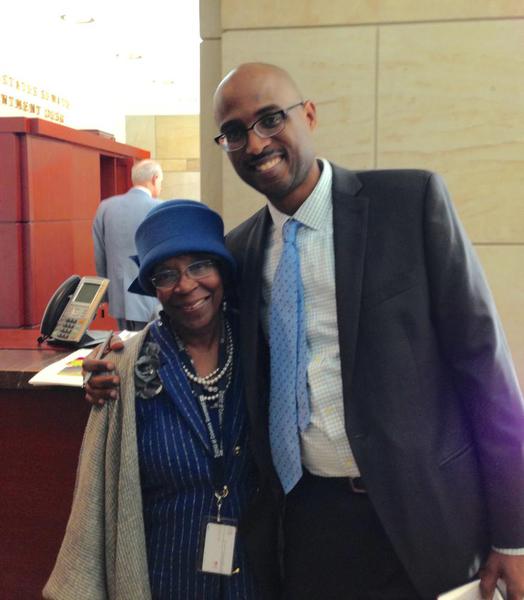 The highlight for me of the “Beyond ACE” Capitol Hill briefing—in addition to networking (more on that later)—was meeting Dr. Roy Wade, known to organizers of the event as “Dr. Roy.” I was familiar with his involvement in the Philadelphia ACEs Task Force and heard his voice for the first time on the NPR series on ACEs.
The highlight for me of the “Beyond ACE” Capitol Hill briefing—in addition to networking (more on that later)—was meeting Dr. Roy Wade, known to organizers of the event as “Dr. Roy.” I was familiar with his involvement in the Philadelphia ACEs Task Force and heard his voice for the first time on the NPR series on ACEs.
Jeannette Pai-Espinosa, President of the National Crittenton Foundation (TNCF), introduced Dr. Wade and told how he, as a child, accompanied his Baptist minister father on visits to the hospital to see congregants. There he saw the devastation of heart disease and amputations and later decided to tackle health disparities as a doctor. As his medical training and career progressed, he realized how poverty, violence and other factors destroyed health in minority communities. He wanted to do something about it. And he has as in his work with the Children’s Hospital of Philadelphia and Stoneleigh Foundation Fellow.
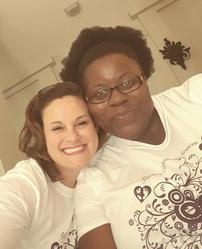 Before “Dr. Roy” highlighted findings from the second Crittenton ACE Survey (the first survey was released three years ago), two women provided the “voices of experience,” putting human faces on the numbers and demonstrating Crittenton’s belief in and commitment to listen to those being served and truly hear what they have to say about what they need to heal. It was a joy to hear how Cassaundra May-Mynatt from east Tennessee— “the most beautiful part of the world”—understood her life and her choices once she learned about ACEs and with support was able to make positive changes.
Before “Dr. Roy” highlighted findings from the second Crittenton ACE Survey (the first survey was released three years ago), two women provided the “voices of experience,” putting human faces on the numbers and demonstrating Crittenton’s belief in and commitment to listen to those being served and truly hear what they have to say about what they need to heal. It was a joy to hear how Cassaundra May-Mynatt from east Tennessee— “the most beautiful part of the world”—understood her life and her choices once she learned about ACEs and with support was able to make positive changes.
May-Mynatt told me that after reading the first chapter in Donna Jackson Nakazawa’s book “Childhood Interrupted” she was compelled to give it to members of her family who would benefit from it. The case studies in the book captured her life. She finally knows the origin of heart and autoimmune diseases that have dominated her young life. She has an ACE score of 10 and realizes that her mother also has high score. She is determined to change that with her children. She shares the ACE survey with all her physicians during appointments—with mixed reactions—so they will have a better chance to actually help her get better.
Tanya Robinson of Charleston, South Carolina (ACE score of 9), spoke movingly about her stolen childhood when she had her “body taken” and was blamed for it by her mother. With new insights into her life, she is getting unstuck and overcoming a survivalist mindset so that she can be a “normal Mom” for her children.
Dr. Wade presented the survey findings (a full issue brief of the findings and policy recommendations will be available in November) including interesting new information particularly on girls and young women with scores 8–10. TNCF is also releasing a toolkit for providers (flyer attached) that includes case studies, testimonials, a tip sheet and a rationale to administer ACE survey in addition to other more clinical assessments.
Some high points of the survey findings (respondents from 16 states were primarily white females younger than 18) by Dr. Wade include:
—Crittenton clients have higher ACE scores than respondents from other surveys (Kaiser, Philadelphia) and close to 70% have ACEs scores of 4 or more
—Female respondents have higher scores than males
—Females with high ACEs scores experience have more placement instability, are more likely to receive residential treatment, and are more likely to have teenage pregnancies and be raising children
—ACEs are associated with a history of trafficking among Crittenton clients and 50% of those with scores of 8-10 have a history of trafficking
—Children of female clients have high ACE scores
—Stress increases with ACE scores. As ACE scores increase, connecting to others and coping skills decrease
I found an opening to introduce myself and invite attendees to join ACEs Connection when a question was asked about what work is being done to understand the prevalence of ACEs and address them in Native American communities (there is an active Native American group on ACEs Connection). The questioner, Denise Litz of the Tuscarora Nation, works in the Administration for Children and Families, U.S. Department of Health and Human Services on tribal TANF issues. Another great connection was made with Ngozi Williams with Polaris, an organization addressing human trafficking (Williams is shown here with Litz in the background).
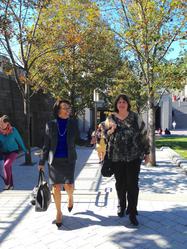 Speakers and guests met at a near-by restaurant to join the conversation and make invaluable connections. My luncheon companions included May-Mynatt, Gloria Johnson-Cusack, President/CEO of the National Human Services Assembly and K. Shakira Washington of the National Crittenton Foundation. We found a number of intersecting interests both at the national and local levels, and found ways for those in the DC area to become involved in the Trauma-Informed DC Initiative.
Speakers and guests met at a near-by restaurant to join the conversation and make invaluable connections. My luncheon companions included May-Mynatt, Gloria Johnson-Cusack, President/CEO of the National Human Services Assembly and K. Shakira Washington of the National Crittenton Foundation. We found a number of intersecting interests both at the national and local levels, and found ways for those in the DC area to become involved in the Trauma-Informed DC Initiative.
TNCF recently joined with the National Women’s Law Center in releasing a report about juvenile justice reforms for girls including the role of trauma in placing girls and young women at risk of entering the juvenile justice system.
Stay tuned for the release of the survey report and toolkit in November.



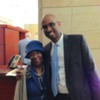
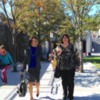


Comments (1)